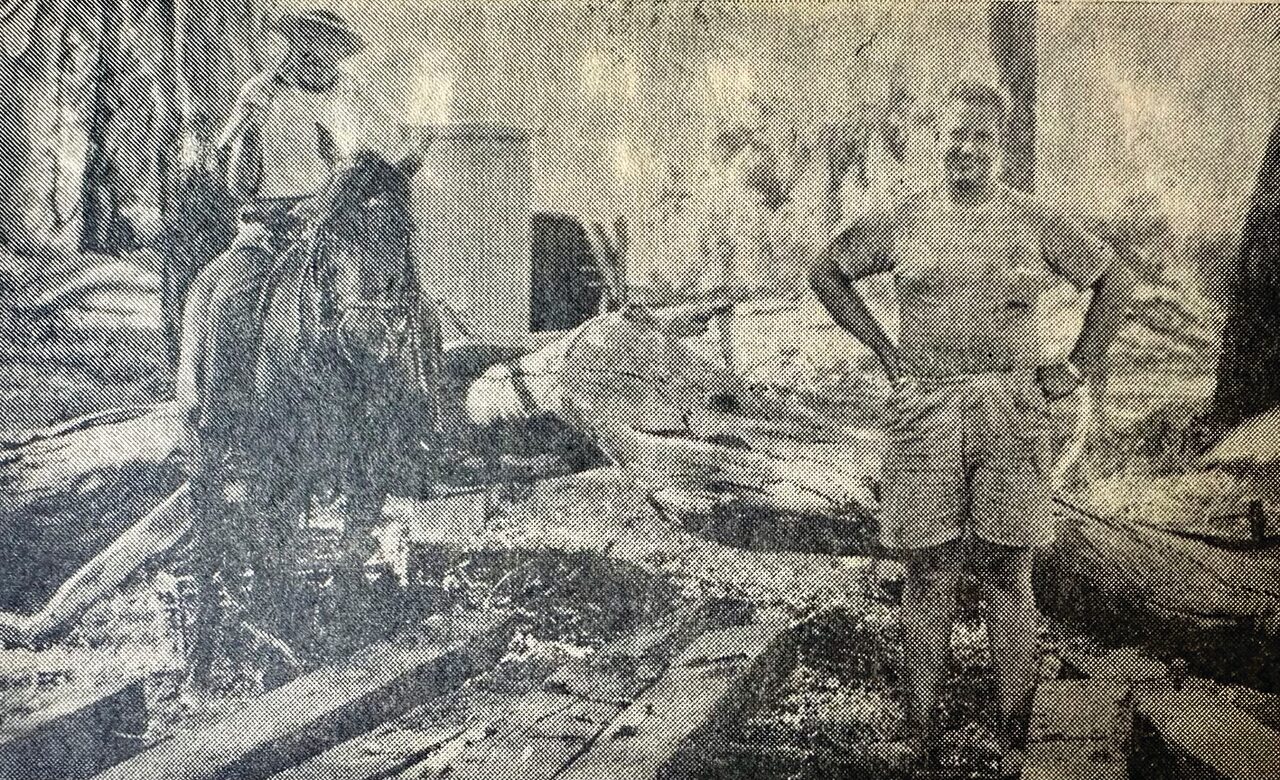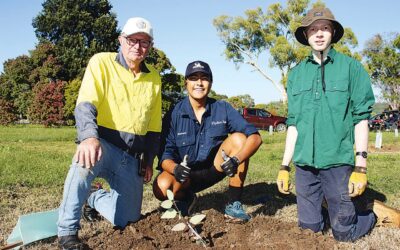On an ordinary work day in November 1961, a historical link with the early days of Gunnedah’s was unearthed during excavation of river gravel by Pioneer Concrete on its Namoi River lease.
Working at the Gunnedah Common east of the town, employees discovered several hundred feet of railway sleepers with standard gauge railway lines attached, some two to three feet below the surface of the gravel deposits.
It was discovered that the line had been a spur used to carry river gravel ballast in the construction of the North West Railway in the mid 1880s.
Because the line had been constructed some 86 years prior to the discovery, there was no-one around who could shed light on the find until 78-year-old George Baldwin came forward with very accurate knowledge of the line, its siting and use told to him by his father William Baldwin who had settled in the district around 1860.
According to a report in the Gunnedah Independent Advertiser, George Baldwin described the route of the old spur line across what was then John Johnston’s property Hartfell, joining the North West line at what used to be known as “the old red gate” about 1 ½ miles east of the town across the property owned by Les McDonagh and later AR Tudgey.
According to George Baldwin, the railway line crossed the Mooki River only a “few hundred yards” north of the Curlewis Road via a railway bridge and then followed the course north of the Mooki River to what was later known as the Tamworth Road.
The article revealed that the line crossed the Tamworth Road approximately east of the Back Creek Bridge, immediately beyond what was then the Mooki River Bridge.
George Baldwin’s father had told him that the line then continued to sweep towards the caretaker’s cottage at Gunnedah Common and then the “ballast hole” on the Namoi River where the gravel was excavated.
The excavated sleepers were still in excellent condition with observers believing they had been preserved because they were buried in moist sand and not exposed to the ravages of sun or borers.
Of great interest to the excavators was the discovery of custom-made spanners used to tighten the “screw dogs” that tied the rails down to the sleepers. It was believed that the “screw dogs” had been specially made in English or Scottish foundries.
The article’s author had accompanied George Baldwin across the paddock from the Curlewis Road where the railway spur line had once passed and discovered that embedded river gravel about eight feet wide clearly defined the route of the railway line to the Mooki River where the bridge once was. He said it must have been a strong bridge from what his father had told him about the weight it had carried dragging trucks of river gravel ballast. He recalled that after the 1912 flood he had gone to the site of the former bridge with Thomas Goodwin when the question of a levy bank was being discussed. The old bridge was then three feet above the level of the bed of the Mooki – Mr Goodwin had told him that the bridge had once been 11 feet above the river bed, indicating the “tremendous siltation” that had taken place since 1875 when it was first built. Although the railway line did not reach Gunnedah until 1879, Mr Goodwin had recalled his father telling him that the spur line to the ballast hole had been in use as far back as 1875 when a temporary line was constructed “apparently in dry weather” across the Breeza Plain and river gravel carted back for ballast in the construction of the North West line across the black soil plain.
He said it had also been used to carry ballast as far north as Emerald Hill when the line was extended beyond Gunnedah and that it had been used well after 1880 for that purpose. George Baldwin recalled that the construction of the railway line had not been without incident, with his father telling him that three rail trucks ready for filling with gravel had been washed away with the breaking of the drought in 1877 when the river broke its banks and flooded across the plain. The carriages were never located.
The extension of the line across the developing grazing and cropping lands of the North West Plains occurred at a time when there wasn’t even a rail connection between Sydney and Newcastle.
The opening of the rail line and the Gunnedah Railway Station was a red-letter day in the short history of the fledgling settlement of Gunnedah with the whole town turning out for the arrival of the first train on September 11, 1879.
Gunnedah as a gazetted township was only 23 years of age – with a population of around 300 – when the railhead from Werris Creek reached town. It was a significant event in the region’s history, as it helped to open up the vast North West plains,
bringing the North West into touch with the Hunter Valley and the coastline.
Ron John’s using the old spammer to extract a screw dog from a sleeper.
To order photos from this page click here


